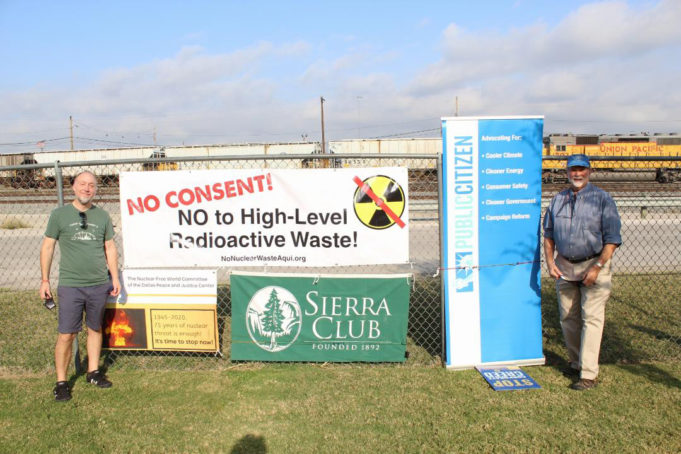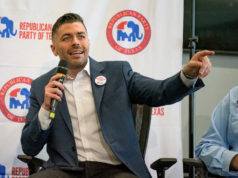Like most large U.S. cities, Fort Worth is intersected by multiple rail lines that were first laid well over a century ago. Trains do much of the heavy lifting in this country, and that work sometimes requires carrying hazardous materials that (if released through an accident or leak) could contaminate the surrounding environment with potentially costly and deadly results.
One such fiery derailment occurred last year in Fort Worth when tankers carrying ethanol derailed during heavy rainfall and created a fire that incinerated three horses holed up in a nearby barn. The potential transportation of highly radioactive waste through Fort Worth is part of a proposal by Interim Storage Partners. The agreement, which will be regulated by the United States Nuclear Regulatory Commission (NRC), has alarmed local environmental and civic activists who fear that the transit of radioactive materials through Cowtown isn’t worth the risk.
According to the NRC, the proposal would allow transportation of spent nuclear fuel, which is highly radioactive and potentially deadly, from East Coast nuclear power plants to Andrews County, which is located in West Texas near Odessa. The NRC is accepting written comments (which can be emailed to WCS_CISF_EIS@nrc.gov) until Tuesday, Nov. 3, an NRC spokesperson said. A document released by the NRC said a final decision would be released by July of next year.
To draw attention to the potential transportation of nuclear waste through Fort Worth, several environmental and civic activists recently held a press conference at Rogers Roundhouse, located north of Fort Worth Zoo and near Davidson Yard, where 50 miles of tracks handle about 1,800 cars a day.
Lon Burnam, former District 90 State Representative, noted that Gov. Greg Abbott has recently spoken out against storing dangerous nuclear waste in Texas. Burnam believes the governor is interested in protecting West Texas for oil exploration, but the point still stands that, among Texas politicians, there isn’t much support for storing nuclear waste in the Lone Star State. The problem, Burnam added, is that the general public knows little about the NRC’s plans. As trains blared deafening alerts just a few dozen yards away, Burnam described what he fears could happen next year.
“We have too many crossings where people will end up sitting on the road when this thing passes by,” he said. “The trains stay in this railyard for 24 or 40 hours at a time. We don’t want them sitting there just emitting” radiation.
NRC maintains that the proposal would have a “small cumulative impact to public and occupational health.”
Susybelle Gosslee with the League of Women Voters of Texas, a nonpartisan civic organization, said Fort Worth has nothing to gain and everything to lose by allowing radioactive waste to pass near hospitals, schools, families, and children.
“If there were any kind of a leak, people within half a mile are in danger,” she said. Fort Worth’s “fire department may not be prepared or have the resources to deal with this. If there was an accident, it can shut down distribution to the city. Our railroads are so necessary.”
Burnam said the realities of using nuclear power plants means that the spent fuel needs to be stored somewhere. Hardened On-Site Storage (HOSS) is one such possibility, he said. The concept allows nuclear waste to be removed from potentially vulnerable areas that are prone to flooding or direct impacts by hurricanes.
“There are some times when waste has to be moved 25 miles away but not 2,000 miles away,” he said.












